Night rest is key to resetting both mind and body, but in addition to getting enough sleep, the posture adopted in bed is also key, as it directly influences the quality of sleep. But what is the best sleeping position? Much has been said about this, so we are going to reveal what the experts say about it so that you can optimize your nights.
We spend a third of our lives sleeping or resting, according to a study published in the journal Work, and doing it right can mean the difference between restful sleep or waking up with no energy and a sore neck. However, we are all used to lying in bed and placing ourselves in a certain position, but sometimes we forget about the movements that occur during sleep and that we cannot control.
As Dr. Rybel Wix, specialist in sleep medicine and member of the Insomnia Group of the Spanish Sleep Society (SES), explains to us, as far as possible “you have to sleep in a position that is comfortable, that favors relaxation and the transition to sleep. The quality of sleep could be affected by the position and comfort of the patient, to ensure continuity of sleep.”
Risks of sleeping in a bad posture
For his part, Alejandro López Orts, physiotherapist and coordinator of UrbanFisio Alicante, explained to us that “at a structural level, the body needs to relax the muscles and take pressure off the joints that suffer the most during the day when moving or standing. But not all postures achieve the same effect or allow you to optimize that time. That is why a correct position when falling asleep will help us sleep better, that our sleep is deeper and that we wake up with a better physical and emotional state.
A bad posture when sleeping can generate tensions that will interrupt sleep and that could lead to insomnia, stress and anxiety
Sleeping in poor posture not only makes us not feel rested the next day, but it can also cause health problems such as pain, inflammation and sensory alteration due to pressure on joints or more sensitive areas due to forced posture. In addition, a bad position can generate tensions that will interrupt sleep and that could cause insomnia, stress and anxiety, Alejandro López tells us.
What are the best sleeping positions?
At this point, let’s get to the heart of the matter, how or on which side should we lie down in bed? The answer is somewhat relative, since it depends on many factors such as age, possible pathologies or health problems that we suffer and other specific situations, such as pregnancy, for example. Therefore, we are going to differentiate the best sleeping positions at home:
-
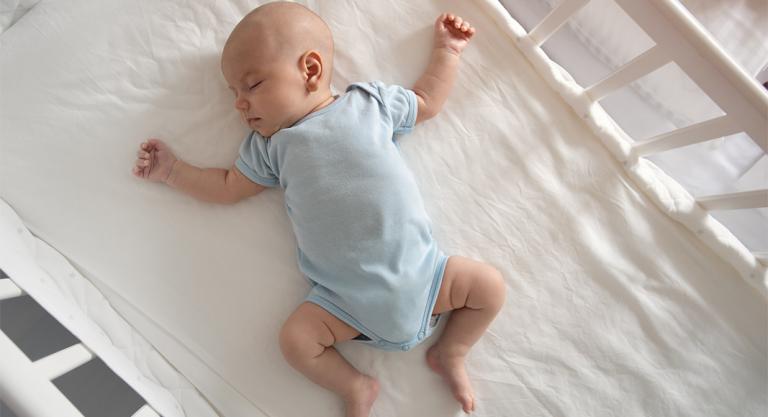
sleeping position of babies
Physiotherapist Alejandro López has recommended that babies sleep supine, that is, face up, “this is because the chances of sudden death and drowning are reduced. Even in babies with reflux problems, it would still be the most recommended option. It should not be put upside down to avoid suffocation and it is not highly recommended to put it on its side, since it is easier for it to turn over and end up upside down.
Rybel Wix adds that sleeping on the back increases deep sleep and also makes it more difficult for infants with an immature respiratory center to have physiological arousals.
-
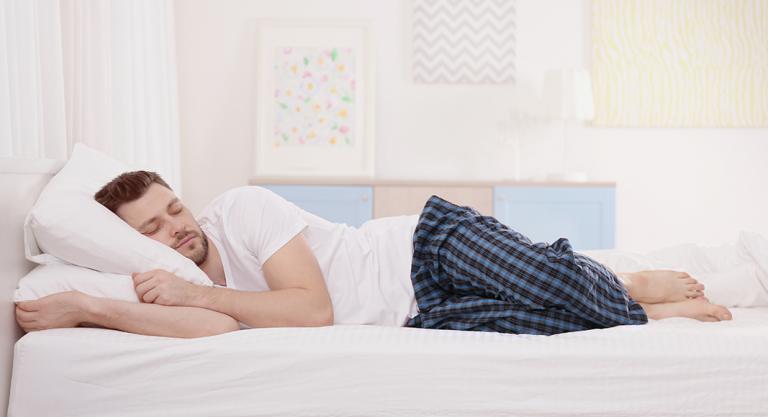
sleeping position in adults
In this group there are several good postures, explains Alejandro, although the best is laterally, preferably on the left side (either in the fetal position or with the legs stretched out). Many people believe that the best way to sleep is on your back, it is not a bad option, but it is not the most advisable. In case of sleeping like this, the physiotherapist tells us that a pillow should be placed under the knees so that the spine rests well and the joints do not suffer. The disadvantages of sleeping facing the ceiling are an increased risk of snoring, dryness in the throat and, depending on the position in which the head is placed, there may be cervical tension.
For this reason, it is more advisable to adopt a position on your side to sleep, but in this case it is also recommended to place a pillow between your knees, in this way a good alignment of the spine and a hip with a less forced position will be achieved. In addition, in this type of position it is easier to breathe well (thus avoiding snoring and complaints from your partner), it helps eliminate neck and back pain, reduces reflux and heartburn (according to a North American study ), and facilitates a better rest. The arm that we tend to place under the pillow is preferable to place on the outside, bordering it, so as not to put pressure on it.
-
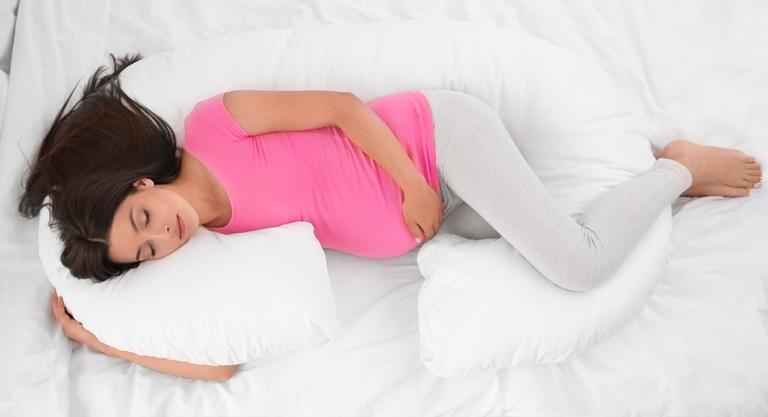
Sleeping position in pregnant women
As sleep medicine specialist Rybel Wix explains, at this stage of a woman’s life it is best to sleep on her side, as this position favors increased blood flow to the fetus. On the other hand, Alejandro López, a physiotherapist at UrbanFisio, agrees with the position in which pregnant women should sleep and adds that it is better if it is lying on the left side, the reason being that this does not put pressure on the liver as the pregnancy progresses.
“The most beneficial for this posture is to place a cushion between the knees and the legs slightly elevated. This is so because this posture facilitates the correct position of the back and eliminates pressure or friction between joints such as the knees or ankles”, concludes Alejandro.
-
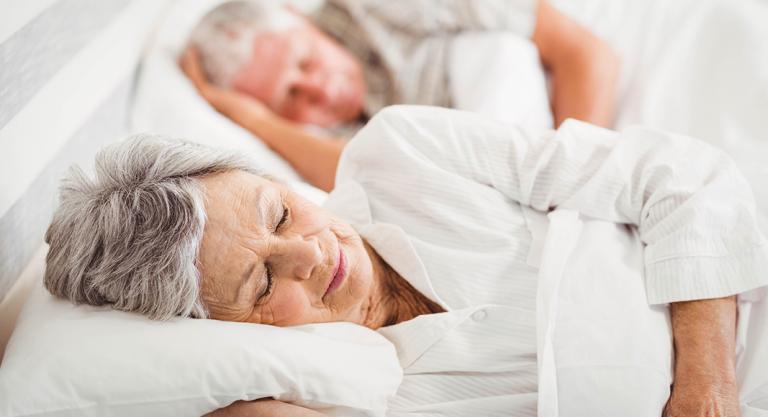
Sleeping position in older people
The sleeping position of the elderly will depend a lot on whether they suffer from any type of pathology, if not, experts recommend continuing to try to sleep on their side.
-
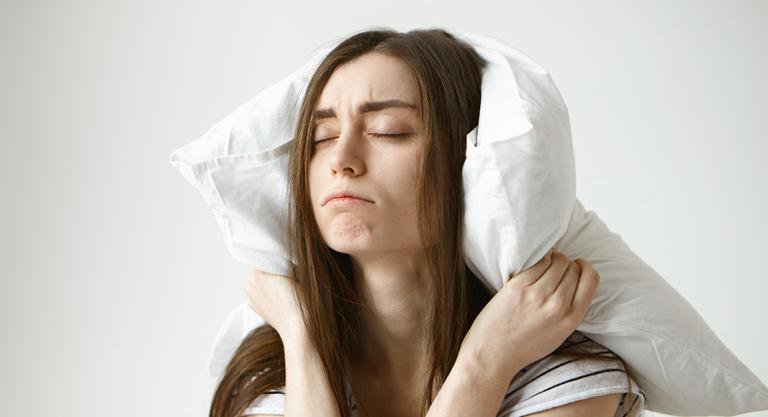
Sleeping postures if you suffer from pathologies
Depending on health problems, you should also try to adapt your sleeping position. These are some of the pathologies that should be taken into account:
The worst sleeping position is…
We have already talked about which are the best sleeping positions, however, it is also important to mention which is the worst for a good rest and good body health. That is neither more nor less than sleeping on your stomach, a very common position that can cause problems in the long run. “While we are face down our column does not rest, it remains suspended and in tension. On the other hand, the ribcage and the lungs are compressed and that makes breathing difficult or can even cause suffocation”, Alejandro López Orts warns us.
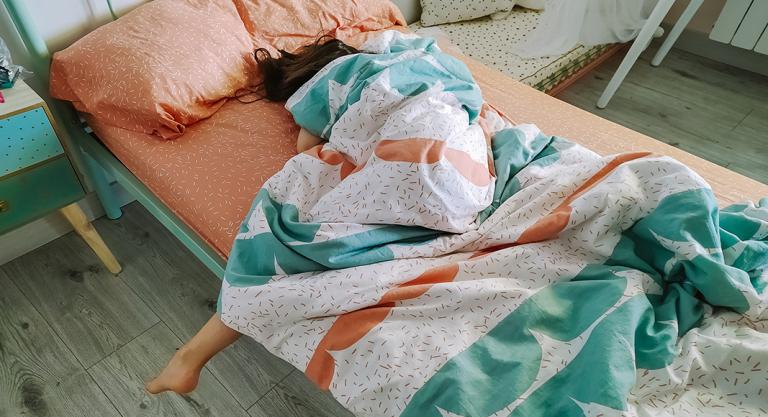
In addition, it must be added that the neck when we are lying face down is placed in a forced rotation, which causes tension, overload and pain in the cervical area.
The expert warns that this posture is especially dangerous in young children and the elderly due to their reduced mobility, and in some cases, their inability to turn around again.
You should also avoid other postures, which are more comfortable a priori, but negatively affect the position of your head and neck, such as sleeping with many pillows or cushions, or sleeping with your arms behind your head.
How to maintain a good posture at night?
This task is difficult, and it is one of the most difficult habits to change. And it is that, we can put a lot of effort in lying in bed in a certain way, but as soon as we fall asleep and lose consciousness, we will surely move. Even so, Alejandro López has given us some advice to try to maintain a good position at night:
.















